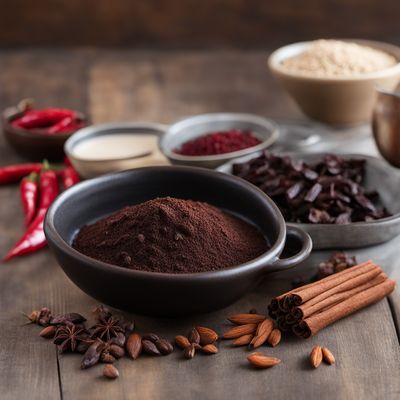
Ingredient
Chipolata-type sausage
The Petite Pleasure: Chipolata Delights
Chipolata-type sausages are slender, small sausages that are typically made from a mixture of ground pork, beef, or veal, combined with herbs and spices. They have a tender texture and a savory, slightly sweet flavor. These sausages are often enjoyed grilled, pan-fried, or added to stews and casseroles to infuse dishes with their delightful taste.
Origins and history
The origins of chipolata-type sausages can be traced back to France, where they were traditionally made during festive occasions like Christmas and Easter. Over time, they gained popularity and spread to other European countries. Chipolatas are now enjoyed in various cuisines around the world, adding a touch of elegance and flavor to both everyday meals and special occasions.
Nutritional information
Chipolata-type sausages are a good source of protein and can provide essential nutrients like iron and vitamin B12. However, they are also high in fat and sodium, so moderation is key when incorporating them into a balanced diet.
Allergens
Some chipolata-type sausages may contain allergens such as wheat, soy, or dairy products, so it is important to check the ingredient list if you have any allergies or dietary restrictions.
How to select
When selecting chipolata-type sausages, look for sausages that are fresh, plump, and have a vibrant color. Avoid sausages that appear discolored, have a slimy texture, or show signs of spoilage. It is also advisable to purchase sausages from reputable sources to ensure quality and safety.
Storage recommendations
To maintain the freshness and quality of chipolata-type sausages, store them in the refrigerator at a temperature below 40°F (4°C). If the sausages are uncooked, use them within a few days of purchase. Cooked sausages can be stored for a slightly longer period. If you plan to store them for an extended period, consider freezing them in airtight containers or freezer bags.
How to produce
Producing chipolata-type sausages requires specialized knowledge and equipment. It is recommended to leave the production to professional butchers or meat processors who can ensure proper handling, grinding, and seasoning of the meat.
Preparation tips
Chipolata-type sausages can be enjoyed in various ways. They can be grilled, pan-fried, or baked to achieve a crispy exterior and juicy interior. They are often served as a standalone dish, accompanied by mustard or other condiments. Chipolatas can also be added to stews, casseroles, or pasta dishes to infuse them with their delightful flavor. Additionally, they can be wrapped in bacon or pastry to create appetizers or party snacks.
Culinary uses
Chipolata-type sausages are commonly used in European cuisines, particularly in French and British dishes. They are often served as part of a traditional English breakfast, alongside eggs, bacon, and other accompaniments. Chipolatas can also be found in dishes like coq au vin, sausage rolls, and various holiday recipes.
Availability
Chipolata-type sausages are commonly available in European countries, particularly in France, the United Kingdom, and other countries with a strong culinary influence from these regions.
More ingredients from this category

Fresh bulk sausages
The Savory Links

Italian-style sausage
Savory Sausage Delight

Fresh spiced sausages in casing
Sausage Sensation: Unleashing the Flavors of Fresh Spiced Sausages

Fresh bratwurst
"Savory Sausage Delight: Exploring the World of Fresh Bratwurst"

Breakfast-type sausage
The Savory Morning Delight: Breakfast-Type Sausage
Recipes using Chipolata-type sausage

Chiles Capones with a Twist
Fiery Stuffed Chiles with a Flavorful Twist

Guatemalan Subanik with a Twist
Savory Delight: A Modern Twist on Guatemalan Subanik

Chorizo a la Chilena
Sizzling Chilean Sausage Delight

Papadzules with a Twist
Savory Enchiladas: Papadzules Reinvented

Chiapas-style Sausages with Spicy Tomato Sauce
Sizzling Sausages in Chiapas' Fiery Tomato Delight

Mexican Meatballs in Tomato Sauce
Savory Fiesta Meatballs: A Burst of Mexican Flavors

Savory Chipolatas with Caramelized Onions
Sizzling Sausages with Sweet Onion Delight

Seven Moles of Oaxaca
A Symphony of Flavors: Seven Moles of Oaxaca